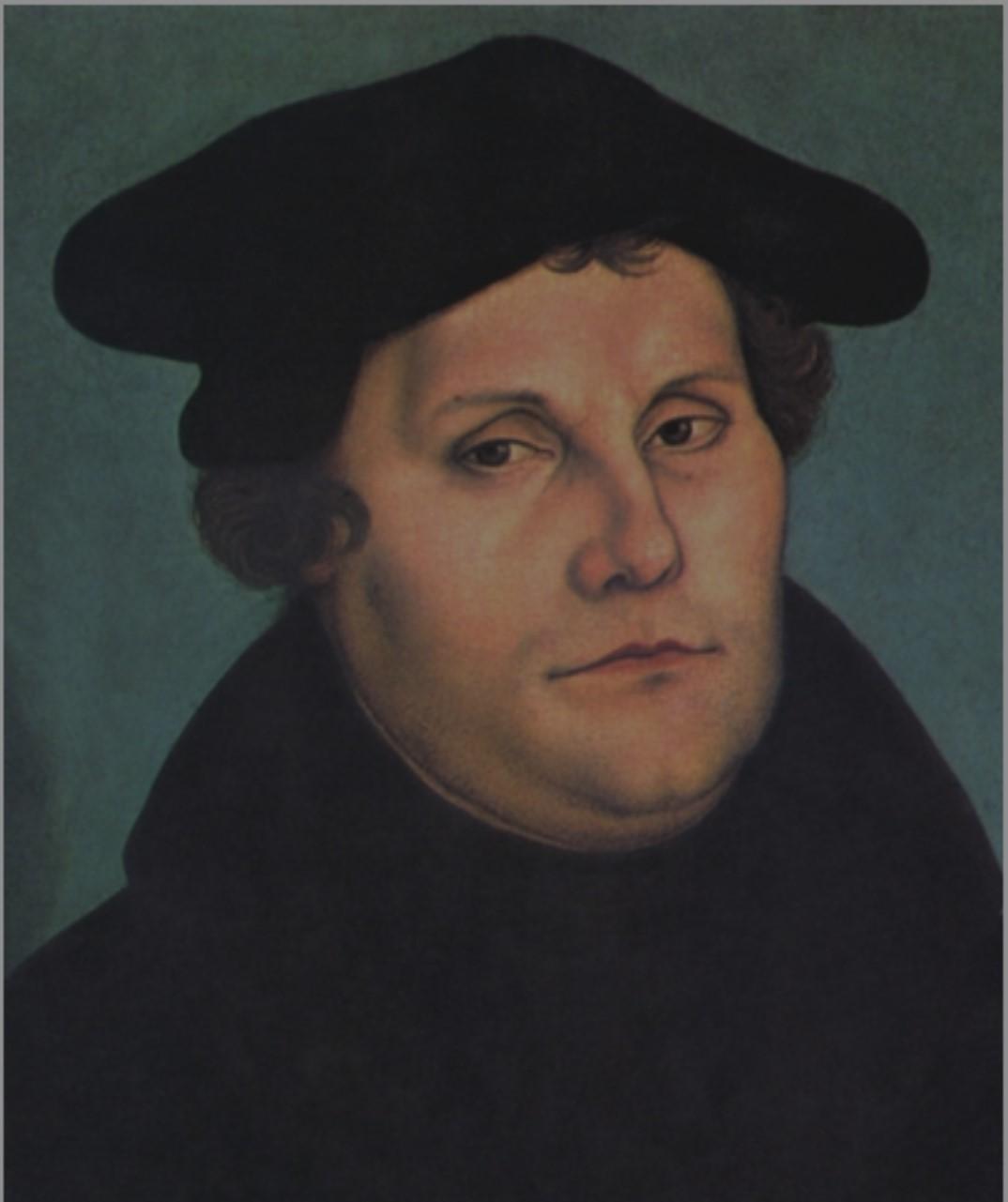In 1517, the Reformation movement led by Martin Luther (1483-1546) broke out in Germany. It was sparked by the Roman church led by Leo X raising huge sums of money for the construction of St. Peter's Basilica by selling so-called "Indulgences."

Portrait of Martin Luther (L. Cranachthe Older, 16th century)
Roman Catholic doctrine states that after death, completely pure and undefiled souls will be able to go directly to heaven to enjoy eternal blessings; souls who have committed great sins will be thrown into hell to be punished; and those who have committed certain sins— almost all of whom will commit one kind of crime in their lifetime— do not have to go to hell, and after death they must first suffer temporarily in Purgatory to atone for their sins, and when their sins are fully purified, they can enter heaven.
The Church declares that the death of Jesus and many of the saints has earned the Church infinite merits, which are the wealth of the Church, and which the Church may take out at any time and grant them in the form of indulgences, repentance, and atonement for their sins through acts of almsgiving, public labor, worship of holy places, participation in crusades, etc., in order to shorten their time in purgatory.
There is nothing wrong with this doctrine. But then, in order to amass wealth, the church turned the "indulgence" that was originally used only as a certificate into a commodity, claiming that as long as it was purchased, the guilty could escape the punishment of purgatory. In doing so, the original goodness of the heart was transformed into the supremacy of money, which caused strong dissatisfaction among many people, including Martin Luther.
Luther believed that only faith, not good deeds, could make a true Christian and save him from hell, "because only those who believe in Christ will become good people, and they will have good deeds." ”
At noon on October 31, 1517, Luther posted 95 of his questions about the "indulgence" on the door of the church in Wittenberg, Germany, thus opening the prelude to the Reformation. This movement was supported by many princes who were dissatisfied with the Roman Church's expropriation of Germany's huge wealth, and many princes took the opportunity to remove the Pope's control over local churches and property, forming the so-called Protestantism. In such a situation, the Roman Catholic Church was forced to turn its main attention to the struggle against Protestantism.
At the same time that the Reformation shook the foundations of the Church in Rome, another great calamity befell Rome.
Since the outbreak of the Italian War, successive popes have been engaged in intricate struggles with the italian separatist powers, as well as with France, Spain, and Germany. Out of anger at the Pope's alliance with France, in 1527 Charles V., King of Spain and Holy Roman Emperor (King of Spain in 1516, known as Charles I, Holy Roman Emperor from 1519 to 1556) sent a coalition of Spain and Germany to attack Italy. Unable to receive the salaries they deserved, Protestant German troops ruthlessly ransacked the Catholic capital. The event dealt a heavy blow to the Church of Rome, and the construction of St. Peter's Basilica came to a complete halt.
In 1546, at the age of 71, Michelangelo was ordained by Pope Paul III to become the new Director of Works for St. Peter's Basilica. With the ambition to "eclipse ancient Greece and Rome," he devoted the last 18 years of his life to this great project.
Michelangelo's revised floor plan of The New St. Peter's Basilica in Rome
However, in order to speed up the progress of the project, a nine-bay colonnade was designed as an entrance sign outside the eastern façade facing the city of Rome. In the most important dome design, he carefully studied The Intention of Blamente, while drawing on Brunelleschi's experience in building the Dome of the Florentine Cathedral and innovating it. He had envisioned a perfect semicircular design, but eventually in order to reduce the side thrust and make the dome stand out more from the bottom up perspective angle, he decided to still use a pointed arch structure, but the two centers were very close together and looked almost semicircular. The dome is also divided into two layers, with 16 ribs made of stone blocks and the rest bricks. There is also a light tower at the top. Despite Michelangelo's tireless efforts to advance the project, by the time of his death in 1564 the work was only completed to the drum mount portion of the dome.
Michelangelo's new St. Peter's Basilica in Rome (É. Dupérac in the 16th century)
The subsequent engineering directors Giacomo della Porta (1533-1602) and Domenico Fontana (1543-1607) completed the dome around 1590, almost in accordance with Michelangelo's intentions. This dome is not unprecedented in terms of size, but it is definitely the most remarkable dome that humans have ever built. Its inner diameter reaches 41.9 meters, which is very close to the Pantheon and the Florence Cathedral, while the height of the internal apex is 123.4 meters, 30 meters higher than the dome of the Florence Cathedral, almost three times that of the Pantheon!
The dome of Rome's New St. Peter's Basilica overlooks
The four arches connected to it are 27.5 meters wide, wider than the nave of Constantine Basilica, while the height of 46 meters and the length of 137 meters are greatly exceeded. It can be said that the aspirations of Bramente and Michelangelo have been fully realized, and a new and promising page has been opened in the history of Europe.
Dome of the New St. Peter's Basilica in Rome